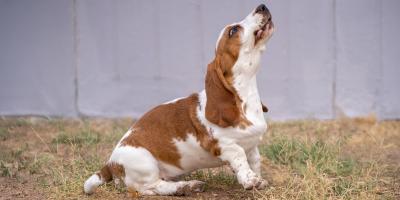Dog Training: How to Teach a Dog to Leave It

Teaching your dog how to leave something alone and not pick it up with his mouth is part of his essential training. The leave-it command can keep your dog from eating hazardous things that drop on the floor in your home like medicine, candy, chicken bones, or small toys. If your dog gets distracted on walks, this command will let your dog know that he can’t pick up and eat trash, unknown food, or other objects when he’s outside.
Leave It vs. Drop It
What is the difference between the leave-it vs. the drop-it commands? Both are important training goals, but they have different meanings. When you say, “Leave it,” you’re telling your dog not to go near an object. When you say, “Drop it,” you’re ordering your dog to drop whatever is in his mouth immediately. You should use the drop-it command after your dog picks something up that isn’t approved, and the leave-it command before your dog moves toward the object.
Below you’ll find seven steps from the pros at Purina for the best way to teach your dog to leave things alone. Watch our video to see the tips in action.
How to Teach Your Dog to Leave It
Along with the sit and stay commands, leave it is another basic command for dogs to learn. It is a more complicated lesson, but with time and patience, your dog will look to you for permission before picking something up off the ground.
To prepare for training, get your dog’s collar and a short leash, some of his favorite treats, and one of his toys that isn’t at the top of his list of favorites. You want to make the reward more interesting than the toy you’re asking him to leave alone. Start the training inside where there are fewer distractions.
Step 1: Put your dog on a leash
- Have him sit
- Make sure he is paying attention to you
- Pro tip:
- If the leash means it’s time for a walk, and your dog becomes too excited for training, you’ll need to desensitize him to the leash before continuing
Step 2: Toss the toy while holding the leash
- Say “Leave it” once
- Keep holding the leash, and if your dog pulls toward the toy, stand still
- If he comes back on his own and looks at you, reward that behavior on the first few tries
- Pro tips:
- Don’t repeat the command during each try
- Repeating the command desensitizes your dog to it, making it meaningless
Step 3: Repeat until he looks to you
- Continue tossing the toy, then give your dog the leave-it command
- Once your dog ignores the toy and looks to you for permission, praise him and give him a treat
- Give your dog the release command and allow him to pick up the toy
- Occasionally, don’t release him to get the toy so he learns he won’t always be able to get the thing on the ground
- Pro tips:
- Use a consistent release word like “okay,” “free,” or “release”
- Just make sure it’s not a word you use often in day-to-day speech
- If he starts to lose interest in the tossed toy, switch to one of his favorite toys
Step 4: Continue the game
- Keep playing until your dog can ignore the toy
- Praise, and reward with treats when your dog obeys
- Pro tips:
- To take the training to the next level, use medium-value treats rather than toys
- Make sure your dog is outside the room, then place medium-value treats on the floor, keeping the high-value treats in your hand
- Bring your dog in on the leash
- Say “Leave it” when he moves toward the treat on the floor
- When he stops and looks to you for permission, praise him and reward him with the high-value treat in your hand
- Don’t release him to get the medium-value treats so he understands some things need to be left alone permanently
Step 5: Keep practicing with a dropped leash
- Drop the leash, toss the toy, and say, “Leave it”
- When your dog successfully looks to you for permission, praise him, reward him, and give him the release command
- Pro tips:
- Watch for clues that indicate your dog is moving toward the object
- You want to give him the leave-it command before he gets too close and can’t resist
Step 6: Take the lessons outside
- Practice with items on the ground during your walks outside
- If he’s having trouble focusing on you, give him the sit command before the leave-it command
- The easier command will prime him for the more complicated one
- Pro tips:
- If the outside distractions are too much, go back to training indoors
- Then introduce real-world situations more slowly
This training takes patience and lifelong repetition. You’re asking your dog to ignore his instincts that make him want to grab tasty food and chase moving objects. But once he learns it, you can trust your dog to avoid picking up or eating things that may cause him harm.
For more helpful training insights, check out the myPurina app.
For more expert tips on training your dog, explore our dog training page.
For your own personalized dog training plan, download Zigzag, the most advanced dog training app, for free and unlock 1 month of Premium Access with unlimited lessons, tailored guidance, and 24/7 expert support using code PUR30 at payment.
Install Zigzag for free now to get started
Related articles

Reward Yourself with myPurina
Earn and redeem rewards for Purina products with the myPurina app.





